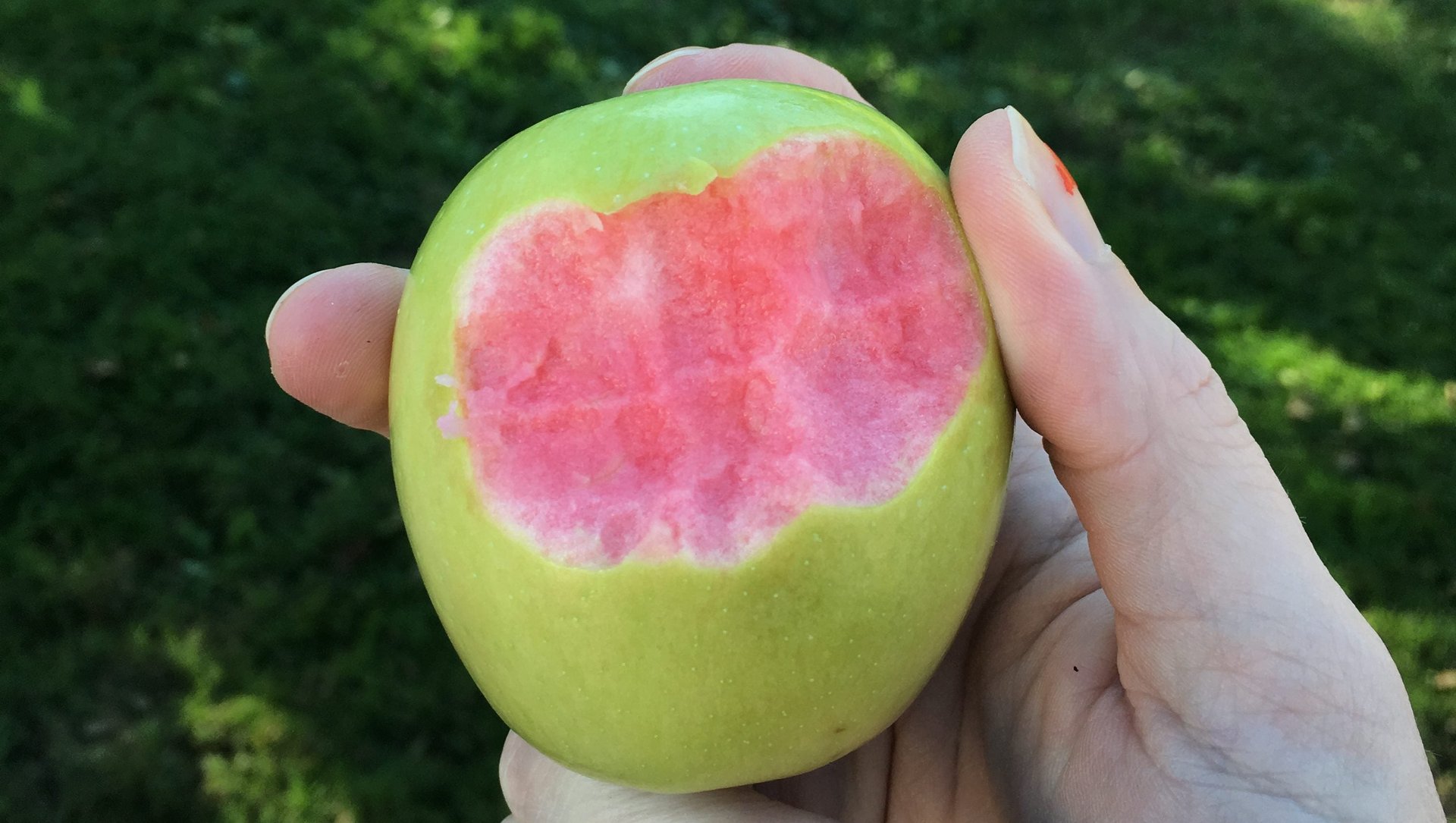This autumn’s apples mark the beginning of the designer fruit era
Quick, name your favorite apple. Did you say Honeycrisp? How charmingly retro. There’s a new era of fruit dawning, and orchard stars such as the Honeycrisp and Red Delicious are about to become quirky throwbacks when compared to a new generation of apples billed as more delicious, beautiful and convenient for eaters, and more productive for growers.


Quick, name your favorite apple. Did you say Honeycrisp? How charmingly retro. There’s a new era of fruit dawning, and orchard stars such as the Honeycrisp and Red Delicious are about to become quirky throwbacks when compared to a new generation of apples billed as more delicious, beautiful and convenient for eaters, and more productive for growers.
The Honeycrisp was arguably the first apple that enjoyed breakout commercial success as well as approval from apple super fans. The large, reddish-green fruit with a sweet-tart, juicy crunch took years of cross pollination and breeding to develop (unlike the Red Delicious and the Granny Smith, which both started out as wild apples that lucky wanderers just happened to discover). Then it took years more to bring the Honeycrisp successfully to market before it became an expensive and sought-after luxury fruit. It was bred for crunch and flavor, but it’s a bit of a snowflake in the orchard, sensitive and more difficult to cultivate than other apples.
Across the world, apple growers are looking to replace their Red Delicious and Granny Smith trees with the next big thing in apples. But what will it be?
The future of apple breeding
In the realm of traditional apple-breeding, there’s plenty of buzz about the SweeTango and the Zestar, and this spring growers in Washington State ordered and planted more than 12 million Cosmic Crisp trees, a new variety that was developed in the 1990s at Washington State University and is on schedule to hit the supermarket in fall of 2019.
They promise the same intense crunch and bright sweet-tart balance as a Honeycrisp, but are hardier and less labor-intensive for growers. And they’re being planted in numbers that are unheard of for a new variety—that’s how certain apple experts are that the Cosmic Crisp is going to be an instant hit.
A GMO apple that parents can love
Consumers have shown a great deal of resistance to GMO food over the years, but the Golden Arctic apple, which will soon be available to Midwestern shoppers in the US, is the first GMO product to hit the market that actually adds tangible value for the consumer. Rather offering benefits to farmers (being resistant to an herbicide) or to chemical companies (that sell herbicide), Golden Arctic apples offer a powerful lure to customers: They simply don’t brown.
Golden Arctics are a Golden Delicious apple that has been modified to get rid of the enzyme that causes browning in apples, and the main appeal seems to lie with lunchbox crowd—busy parents for whom sweet, pre-sliced apples offer welcome convenience. (After all, no one really goes out of their way to eat a Golden Delicious apple, do they?)
This apple will be a real bellwether in the GMO debate (paywall). Suspicion of GMO corn and soy abounds, but then again, so do GMO corn- and soy-derived ingredients in everything from Nature Valley Granola Bars to Doritos. With the Cavendish banana facing a slow but steady march toward extinction in the face of banana wilt, the question of whether shoppers are willing to buy GMO fruit may determine what’s in our fruit bowls at all in 20 years.
The exotic European beauty
In Europe right now, there’s an apple so designer that it has own logo, slightly confounding website, and elaborate product launch plan. If you like apples at all, it’s hard to see how you wouldn’t want to at least try the Kissabel, which comes in three varieties with flesh that ranges from crimson to salmon, and reportedly boasts distinct berry notes. (And if you like Instagram at all, it’s hard to see how you wouldn’t want to take a picture of one.)
Developed in France, the Kissabel has the first teaser video I’ve ever seen for a fruit. Like the Cosmic Crisp, the Kissabel was developed the old-fashioned way, through years of cross-pollination, grafting, and trial and error. It’s just for the European market this year, but distribution is slated to expand around the apple-eating world over the next few years.
Ancient treasures
Whether driven by climate change, disease or the simple human demand for novelty, the produce aisle is going to look quite different in a few short years. You can get weird with your fruit right now, though, if you’re willing to step outside the supermarket.

Where I live, in Vermont, Scott Farm Orchard collects and cultivates heritage varieties of apples, pears, quince, and medlars, and I’ve been enjoying their often ugly apples all fall, including two pink-fleshed varieties that are extremely photogenic.
I can see one of them, the Hidden Rose, becoming a star, with its green and pink skin and bright pink flesh—on Instagram someone called it a Lilly Pulitzer apple. The Niedwetzkyana though, is tart and starchy, good for beautiful pies but not for taking a big crunchy bite out of. And they don’t have the staying power of an apple bred for the international market: Mine bruised, browned, and got soft very quickly, as do a lot of heirloom apples.
Eating these old-school apples—the vintage store gems of the fruit world—helped me understand why commercial growers who want to ship apples around the world are always seeking out a new and better apple that blends durability with deliciousness. Still, it’s fun to imagine being the first person to discover a tree laden with an ancient apple variety.
An earlier version of this article referred to the new apple being grown in Washington State as the Cosmic Crunch, rather than the Cosmic Crisp, the correct name.